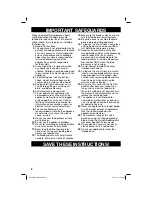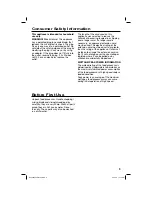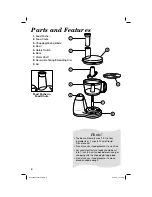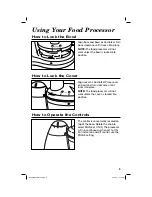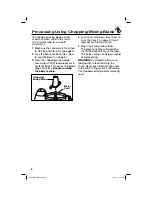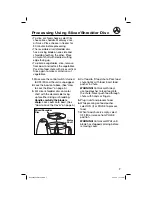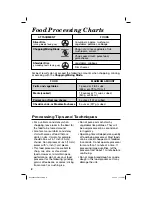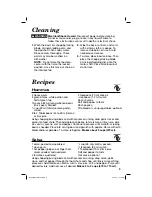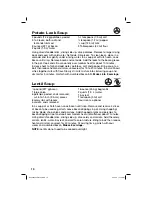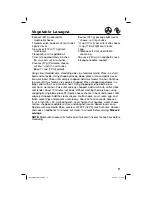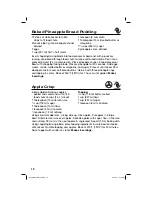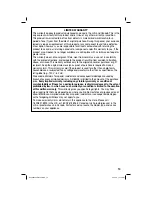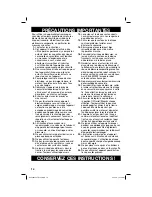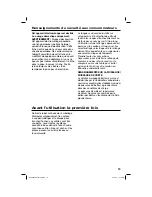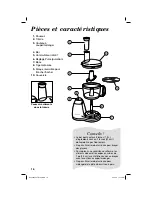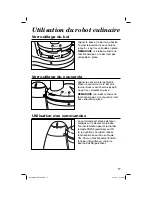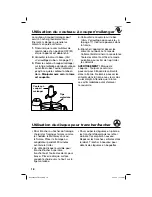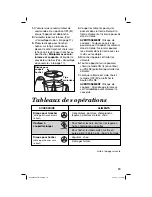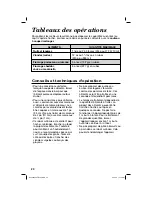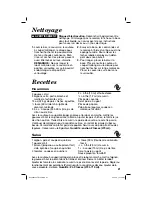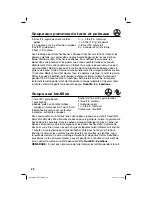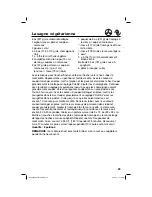
8
Food Processing Charts
ATTACHMENT
FOODS
Slicer Disc
Cucumbers, apples, mushrooms,
vegetables, potatoes, cabbage
Chopping/Mixing Blade
Chop nuts; mince vegetables, fruit,
mushrooms,
carrots
Chop cooked meat, puree food,
grate
cheese
Shredder Disc
Vegetables,
cabbage
Firm
cheeses
(slicing blade facing up)
(shredding teeth facing up)
FOOD
MAXIMUM
AMOUNT
Fruits and vegetables
1 pound or 2 to 3 cups
(454 g or 473 to 710 ml)
Meats (cooked)
12 ounces or 1
1
⁄
2
cups, cubed
(340 g or 355 ml)
Parmesan or Romano cheese
5 ounces (142 g), cubed
Cheddar, Jack, or Mozzarella cheese
8 ounces (227 g), cubed
For best results do not exceed the following amounts when chopping, mincing,
or pureeing with the
Chopping/Mixing Blade.
Processing Tips and Techniques
• For a uniform consistency when
chopping, leave room in the bowl for
the food to be tossed around.
• Also for a more uniform consistency,
start with pieces of food that are
similar in size. Carrots, for example,
should all be cut in 1-inch (2.5-cm)
chunks. Do not process 4-inch (10-cm)
pieces with
1
⁄
2
-inch (1-cm) pieces.
• This food processor is excellent to
chop, mix, slice, or shred most
foods. However, to maintain peak
performance, do not use your food
processor for the following: grinding
grain, coffee beans, or spices; slicing
frozen meat; or crushing ice.
• Do not puree or mash starchy
vegetables like potatoes. They will
be overprocessed in a second and
turn gummy.
• Operating time will depend on quantity
of food being processed. Most foods
can be sliced, chopped, or shredded
in seconds. Do not operate processor
for more than 1 minute at a time. If
processing large quantities, let the
processor rest about 1 minute before
continuing.
• Do not make bread dough or cookie
dough in this food processor. It may
damage the unit.
840249200 ENv02.indd 8
840249200 ENv02.indd 8
6/10/14 10:12 AM
6/10/14 10:12 AM


